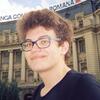Discovering the Longest-Ever Long-Period Radio Transient

Transients are a broad class of events, referring to observations where some measurable change occurs, typically in brightness, over relatively short timescales. This term encompasses a wide variety of phenomena, ranging from stellar occultations to supernovae to tidal disruption events. Within the radio spectrum, two classes of events have been more thoroughly studied. Fast radio bursts (FRBs) are extremely brief flashes of radio radiation, often lasting milliseconds, with largely undetermined origins. On the other end of the spectrum, slower radio emissions, which are not considered transients, are typically associated with sustained active galactic activity, such as quasar jets. These tend to persist for years or even longer.
While short-duration radio transients like FRBs have garnered significant attention, the study of long-period radio transients (LPTs) is a more recent and developing field. These phenomena occur on intermediate timescales, ranging from a few seconds to several hours. Their study has been largely constrained due to their detections being concentrated in dense regions of our galaxy. In such crowded fields, distinguishing the transient from nearby sources has been challenging.
Now, a study led by Natasha Hurley-Walker attempts to further bridge the gap between the shortest and longest radio signals by identifying the longest-ever LPT. The team discovered the transient event GLEAM-X J0704-37 during the analysis of archival data from the Murchison Widefield Array (MWA). Excitingly, the target stood out because it occupied a relatively sparse region of space, facilitating detailed follow-up investigations and discussions of its origins.

The target was first identified within the archived datasets using a visibility differencing technique optimised for detecting the brief changes in brightness associated with transient events. Precise follow-up observations were performed with the MeerKAT radio telescope to confirm that the transient was periodic in nature, emitting 30–60 second radio pulses every 2.9 hours. The high-resolution MeerKAT data also revealed that the emission was strongly linearly polarised. Such emission is typically associated with ordered magnetic fields, often arising due to magnetic pulsars. Additional optical data was gathered using the 4.1-meter SOAR telescope, enabling spectroscopic analysis that identified the source as an M3 dwarf star.
The study discusses further analysis of the timing of the radio pulses and the variability identified therein. They found that rather than a perfectly regular 2.9-hour interval, pulses often arrived with some timing deviation. Intriguingly, these deviations were not random but appeared to follow a sinusoidal pattern, with a period of 2283 ± 84 days, or around six years. While such variation could have a variety of origin mechanisms, such as fluctuations in magnetic field strength, the team strongly suggests that GLEAM-X J0704-37 is part of a binary system, as has been observed in similar systems. In this case, the sinusoidal timing variation is caused by the Doppler effect.

The presence of an unseen companion would not only explain the sinusoidal modulation of the pulse arrival times but could also account for why the emissions are so strongly polarised. The study suggests that the companion may be a magnetic white dwarf or even a neutron star, whose interactions with the M3 dwarf drive the radio emissions observed. That said, there is yet no explicit evidence for the binary system, and further observations of GLEAM-X J0704-37 are required to precisely characterise the system’s orbital dynamics and confirm this hypothesis.
--
Journal Source: N. Hurley-Walker et al, A 2.9 hr Periodic Radio Transient with an Optical Counterpart, The Astrophysical Journal Letters, Vol. 976, No. 2, (2024), DOI: https://doi.org/10.3847/2041-8213/ad890e
Cover Image Credit: M. Garlick/University of Warwick/ESO
